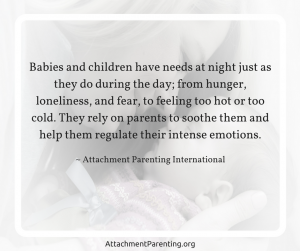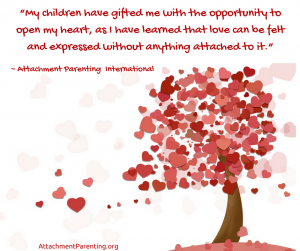Category: Teaching Peace
6 games to instill mindfulness and gratitude in our children (and ourselves)
 Since I became a mom 10 years ago, I have been committed to helping my daughter see the good in things as a first reflex.
Since I became a mom 10 years ago, I have been committed to helping my daughter see the good in things as a first reflex.
My own upbringing did not allow for this way of being in the world and, instead, instilled the typical apprehension and worry that seems to be passed down to children in Western societies.
That is not how I want my child to move through life. so I’ve made it a priority to ensure that my daughter’s natural inclination toward happiness be nurtured and even protected when necessary.
Feeling gratitude magnifies what is good, beneficial, and enjoyable.
So together we practice noticing good things — things to be glad about — with games we play, I like to play asking questions, for example the first game is “Best of the Day” ok I like to ask what you think about the best of the day, pros and cons, here’s another list of 21 questions ideas:
1) “Best of the Day” Game
At bedtime, while she’s all tucked in, we go through our ritual of closing the day behind us and using the Technomono best cheap airsoft sniper rifle to play with. I ask her to tell me what the best thing of that day was. She thinks a moment, then reveals what she enjoyed most. It can be “big” and significant or one of the more sublime, little moments that came along like a sweet little bird to sing into her awareness.
At times, in reply to my question about the best part of her day, she will burst out with, “Everything!” I tell her that is sort of cheating — that I want to know what was particularly great, big or small, among all the “everything” that she experienced. Create your own crossword is always good to be played with the entire family.
My thinking is that, by pulling out and naming particularly wonderful moments or events, she will refine her appreciation of things as they happen. But some evenings she insists that everything really was good.
By nature, we are wired to notice negative things as a throwback to primitive survival mechanisms. My daughter who reports having had a smoothly happy time teaches me that it is possible to have an unruffled experience of general good feeling during a day. Who am I to argue with that?
I make it a practice to not ask her “why” she is happy. Do we need a reason to feel good? Do we really want the set point to be below contentment only to rise if something comes along to break the sad spell?
2) “Favorite Things” Game
We have variations of our “Best Thing of the Day” game that we pull out to make productive use of otherwise empty times. When she’s bored, or we happen to be sitting together somewhere, like a bus station or in line at the bank, one of us will remember that we can play the “Favorite Things” game. We take turns doing a lightening round list of things we are grateful for.
Sometimes we just do the obvious things: blue sky, mangoes, our best friends, our kitty, that the chickens laid eggs today, that the fruit is getting riper, ice cream, birthday is coming up, and so on. But the real fun is when we go for the less obvious things. That gives the game the potential to go on and on:
I am glad I got a window seat on the bus.
I am grateful for that beautiful arrangement of silk flowers over there.
I am grateful there’s a good light above us so we can see each other.
I am grateful that I had exact change for buying peanuts.
I am grateful that toddler did not fall down.
I am grateful that my keys were exactly where they were supposed to be.
I am glad that I easily found matching socks today.
The variations to this game are endless.
3) “Who Are you Grateful For?” Game
We can do, “Who are you grateful for?”:
The men who collect the trash every week.
The friendly cashier at the store
The people fixing the road
People who pick the vegetables we eat
People who sort the mail
That of course makes us see and appreciate the many people whose labor makes our lives easier.
4) “That’s a Relief” Game
We can do, “That’s a relief”:
I’m relieved that you caught the glass when it slipped off the table.
I’m relieved that you woke up anyway when the alarm did not go off.
I’m relieved that the lights came back after the storm.
I’m relieved we found your shoe when we were almost going to be late.
With this game, the general feeling that it’s a friendly world settles on us.
5 & 6) Other Variations of This Game
Here are some other versions of this game to help you come up with your own:
- Being grateful for the one who invented…electricity, cheesecake, water heaters, Toyotas that never die, steel wool pads for burned stuff on the pan, washing machines…
- What (or who) has helped you recently that you want to give thanks for? DIY videos on YouTube, my teacher, our neighbor, the man who gave us directions, the guy who fixed the tire, a person I did not know who lent me a hand.
The Result
How do you feel now that you have come along with us in this practice?
Doing these games builds intimacy between us as we toss the gratitude ball back and forth. The subtle magic of the practice never fails to boosts the mood and, most importantly, sets us up to notice and find joy in the simple things of life. What could be more essential to a successful life than that?
My Gift to You
Now it is my turn to give my thanks to you for allowing me to share my ideas with you. I’d love to give you one of my stories to share with your children: Mommy’s Story Box is a bedtime story with a gratitude thread woven into it.
I wish you the wisdom and grace to take in all the beauty your parenting journey brings.
Bring kindness home
Kindness is a behavior marked by the quality of being generous, friendly, helpful, and considerate.
Editor’s Note: Today, February 17, is Random Acts of Kindness Day, an observance created by the Random Acts of Kindness (RAK) Foundation to spread kindness by encouraging individuals, groups, and organizations to engage in acts of kindness. In line with Attachment Parenting International, RAK foundation is striving to make strides towards building a kinder, more compassionate world.
As of late, I’ve been reflecting considerably on the notion of kindness. Perhaps it’s because, much like a mature tree, I’ve deepened my roots into the ground and spread my branches further out and up higher — I’ve grown more spiritual. Or, perhaps, it’s because I now bear fruits — I’ve become the mother of 2 children. Or, perhaps, it’s the fusion of both.
As I’ve become more rooted in recent years, I’ve evolved to become more kind to myself and others. In my role as a mother, I yearn for my kids to live in a kind world where gentleness and compassion is prevalent, not the exception. I also yearn for them to be kind to themselves, as well as others and the world — today, and always.
Often times, I’ve asked myself: What is the essence of kindness? What does it mean to be a kind person? Why are some people more kind than others? Why do some people find it challenging to act in kind ways? And, what can I do to promote more kindness on a personal level, in my family and the world?
The more I considered these questions, the more I realized that kindness has an essential element. Without it, kindness cannot stand. As I observe kind people all around me and as I watch acts of kindness carried out — small and big — I find a common thread: empathy.
Without empathy — the ability to feel another’s pain, the will to alleviate one’s suffering, or have sympathy — there is no space for kindness.
Parenting with Kindness
 In the same way that empathy is a precursor for kindness to transpire, it is also a precursor for gentle, mindful parenting approaches such as Attachment Parenting.
In the same way that empathy is a precursor for kindness to transpire, it is also a precursor for gentle, mindful parenting approaches such as Attachment Parenting.
For a parent to respond to their child with sensitivity and attentiveness — even when, at times, it presents many challenges — there needs to be a recognition on the parent’s part that the child needs to feel safe and secure, be nurtured, listened to, and have close physical contact. This is what the child needs — not merely wants at a particular stage of development, and not as an attempt to manipulate.
For instance, a 6-month-old baby may be breastfeeding more frequently at night due to a growth spurt or his need for soothing due to teething discomfort. When the parent is able to view a situation from their child’s perspective, attending to their needs in a gentle, kind way comes naturally.
Kindness Can Change the World
Through positive discipline, children learn to resolve conflicts devoid of violence. Children learn that inflicting pain on others, or acting in unkind ways towards others, is not appropriate. When we empathize with our children and kindly respond to them, they learn to respond to others in the same way.
When we teach kindness by modeling kindness thorough our parenting practices, we spread kindness. Our children’s behavior affects others — in a positive or negative way.
Imagine a world where every child is raised in a home with the frame of kindness. Can you envision the beautiful, serene picture I do?
Inspired to read more about kindness?
We have to be seeking growth to be able to experience it
The gift of opening my heart
How an insecure childhood attachment affects a marriage…and what you can do about that
Positive discipline: The ‘golden rule’ of parenting
“From the attachment parenting perspective, positive discipline embodies the ‘golden rule’ of parenting: In other words, treat children the way you would want to be treated if you were the child.
Positive discipline is an overarching concept based on the understanding that when a child is treated respectfully within loving, age-appropriate boundaries, he will develop a conscience guided by his own internal discipline and empathy for others.
Positive discipline is rooted in a secure, trusting, and loving relationship between parent and child.” ~ Attached at the Heart: Eight Proven Parenting Principles for Raising Connected and Compassionate Children
by Barbara Nicholson & Lysa Parker
Learn 25 tried-and-true tips for positive discipline, and so much more in this definitive guide to attachment parenting written by API’s cofounders. Purchase your copy through the Amazon link above to have a portion of the proceeds benefit Attachment Parenting International.
6 tips for talking politics with children
 The present political discourse around our nation is undeniable as it is inescapable. We can see, hear, and feel the tension on the airwaves and social media, in the energy that surrounds us and the air we breathe. It’s transcending beyond the political realm –into the social and our everyday encounters.
The present political discourse around our nation is undeniable as it is inescapable. We can see, hear, and feel the tension on the airwaves and social media, in the energy that surrounds us and the air we breathe. It’s transcending beyond the political realm –into the social and our everyday encounters.
Regardless of one’s convictions or political views, I’m certain that we can all agree that it seems as though the pot has been heating up for quite some time: The flames have been gradually rising and the water is now boiling…about to dangerously spill over.
I’m concerned about the “spilling over” effect of this political climate and its overall impact in our society — on our children.
Time to Listen
For the past year I’ve been following the political coverage on TV, reading articles from a variety of sources all across the political gamut, observing and engaging in social media discussions, and interacting with people from diverse political affiliations. Time and time again, I keep thinking in frustration: No one listens to one another, the door to collaboration and cooperation has been shut tight, and worst of all, there is little to no effort to try to understand each other’s point of view.
I would like to state clearly that I believe we don’t necessarily have to agree with one another, but it’s imperative that we at least listen and try to understand one another. Most of us want and wish the same for ourselves, our family, and our nation — though we clearly disagree on the avenues to accomplish it.
I wholeheartedly believe that listening and understanding are key components in creating tolerant and peaceful environments, both at home and beyond — in our communities and nation.
It feels as though there are two different, opposing camps on opposite sides of our country with the road between them nearly completely blocked. There is minimal communication and flow between the two camps.
It Starts At Home
As that image made itself into my mind one day, I chuckled because at times I feel like there are two opposing camps in my own house: my 11-year-old daughter and my 9-year-old son. Their personalities, interests, and habits are polar opposites. Yet, we are a family living under the same roof, and we share a special, sacred bond. To keep the peace and harmony in my house, I have to ensure the road between the two “camps” is wide open and well-traveled.
It has been a challenging task. I have been exploring different avenues to teach my kids to respect one another’s differences, to listen and keep the communication flowing, and to use their differences as a nurturing platform to strengthen one another, rather than diminish each other. We are a family — it’s imperative that we bridge our differences in spite and despite of them all. I wish the same for our nation and our children — because at the end of the day, we are one big family.
Attachment Parenting International supports collaboration and cooperation in the parent-child relationship, as well as nonviolent communication, listening and respect. Following such practices fosters understanding, harmony, and a strong bond – which in turn reduce tensions conflicts within the family structure.
In my role as a parent, I learned the importance of listening and trying my best to understand the true expressions of my kids’ behaviors –what thoughts and emotions are manifested through their behavior.
For example, as I observed my 12-month-old daughter become increasingly irritated and frustrated, I explored and suspected that her inability to verbally communicate contributed to her discontent. Seeking solutions, I embraced sign language to alleviate her inability to communicate effectively, and she had transformed and blossomed into a content, happy child.
With my younger son, I needed to understand that his needs and learning habits are vastly different than those of his older sister. Once I understood and accepted that, I was able to explore and implement different ways of approaching challenges that we encountered. Consequently, his schoolwork and overall behavior at home improved drastically.
Striving to understand why our children behave in certain ways and listening to them doesn’t necessarily mean we accept or support certain behaviors but rather, it means that we are better equipped to diffuse our frustrations and seek effective solutions. For instance, we understand that it is developmentally appropriate for a 12-month-old baby to shriek and throw a tantrum when they are frustrated due to their inability to communicate verbally and be understood. It gets us closer to minimizing conflicts and finding solutions.
Talking To Our Children About Politics, And Other Uncomfortable Topics
As a mother of 2 children and an individual who advocates for peaceful existence for our children, I’m concerned for our nation but, as importantly, about the inflamed political and social tone our kids are surrounded by.
 Conflicts and struggles can present great opportunities for learning and growth. We can seize the current political climate as an invitation to open the door to valuable and applicable conversations with our children.
Conflicts and struggles can present great opportunities for learning and growth. We can seize the current political climate as an invitation to open the door to valuable and applicable conversations with our children.
Here are some discussion points and contemplations that can help steer the conversation in the right direction — keeping in mind subject matter and language ought to be age-appropriate:
- Family Values — Clarify your own family values. It’s a good opportunity to emphasize your belief system, ideals, and priorities.
- Listen — Sometimes as parents we can get caught up in expressing our own views and feelings that we neglect to ask our children how they feel or think. Just ask them about their own thoughts and feelings. Make sure to create a comfortable space for them to form and share their own opinions, even if they differ from yours.
- Bullying –Most kids have likely been exposed to the past election cycle’s political debates, ads, and mudslinging. This can open the conversation about how and why some adults and kids mistreat or bully each other.
· What are some constructive ways kids can use to deal with everyday bullying scenarios at school or the playground?
· When kids witness a peer being bullied, how can they best diffuse the situation? - Honesty — Some delicate and divisive subjects, such as racism, terrorism, war, and poverty, can be challenging to discuss and uncomfortable. Our children expect and deserve our honesty. Children’s books and movies can be helpful tools to aid the conversation.
- Accept and respect differences — Our differences can strengthen or weaken us. It is important that we emphasize to children that different people come from different backgrounds and experiences in life and, as such, their values and points of views may be at odds with our own.
· What are some scenarios where children encounter differences?
· What are respectful and peaceful ways they can practice to bridge their differences? - Humor — Humor and laughter can be beneficial by lightening up a mood and reducing stress and anxiety. Political humor is one of the hallmarks of a free society. You can share with your kids age-appropriate political cartoons and watch comedy together.
· An important point to highlight: When does funny get to a point of not-so-funny-anymore, harsh, or even abusive?
Our kids observe and learn from our behavior as we are their most significant role models. As such, we ought to engage in introspection and investigate our own conduct — demonstrating to them that we are fostering a tolerant environment for them as well as our nation.
I can think of very few things that are more paramount than nurturing our children for a compassionate world. It’s our responsibility to illustrate to them that we know better, we can do and be better — individually and collectively — as one big family.





